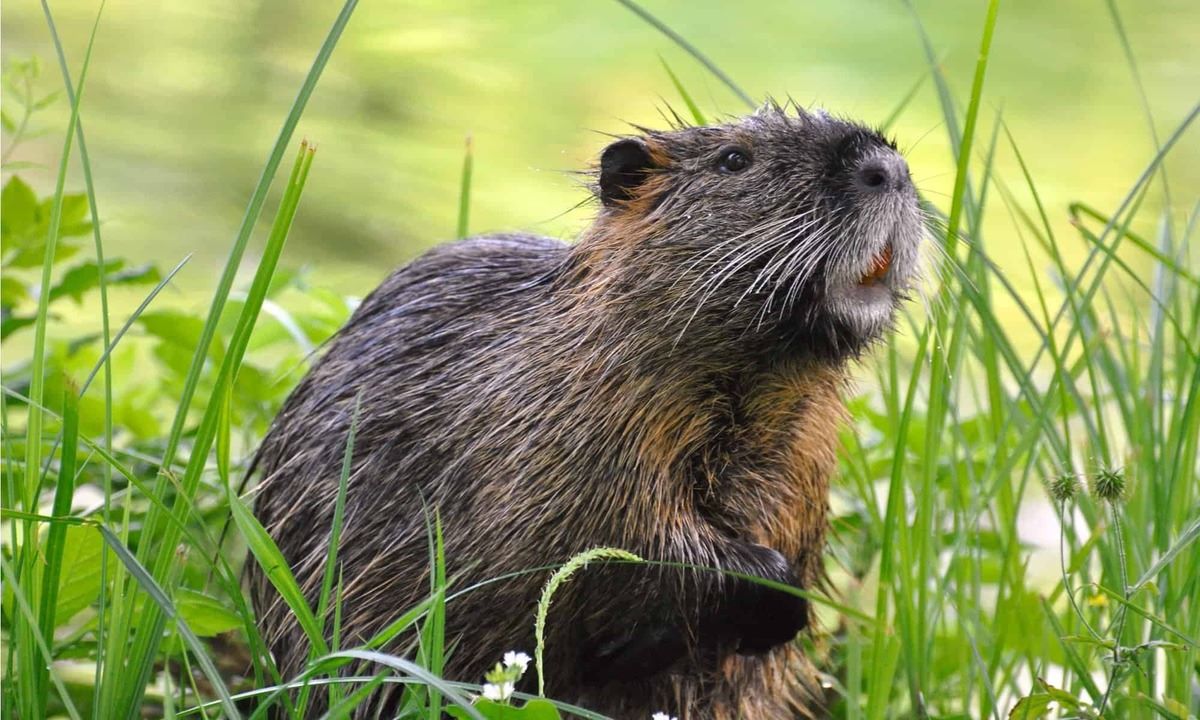
Spider enthusiasts and curious adventurers, gather round! Today, we delve into the mysterious world of the wandering spider, a fascinating creature that captivates the imagination with its enigmatic nature. With over 900 species found across the globe, these spiders have earned a reputation for their notorious habits and unique characteristics.
In this article, we uncover 13 intriguing and little-known facts about wandering spiders that will leave you in awe of their adaptability, hunting prowess, and peculiar behaviors. From their lethal venom to their impressive size, these arachnids have many surprises in store for us.
So, get ready to uncover the secrets of these elusive creatures as we unravel the 13 enigmatic facts about wandering spiders. Brace yourselves for a thrilling journey into the arachnid world and prepare to appreciate these remarkable creatures in a whole new light.
Key Takeaways:
- Wandering spiders are stealthy hunters with venomous bites, unique defensive displays, and exceptional climbing and sailing abilities. They play a vital role in ecosystems by controlling insect populations.
- The venom of wandering spiders has potential medicinal applications, and some species exhibit maternal care. Their enigmatic behaviors and adaptations make them a captivating species worth studying.
The Wandering Spider is a Stealthy Hunter
Wandering spiders are stealthy hunters that possess exceptional agility and speed. Their remarkable ability to navigate through the forest floor or climb trees with ease makes them successful predators in their habitat. They patiently stalk their prey, using their excellent vision and acute sense of vibration to detect even the slightest movement.
These Spiders Can Deliver a Painful Bite
The wandering spider holds the reputation of being one of the most venomous spiders in the world. Although not all species are equally dangerous, their bites can cause severe pain, inflammation, and in some cases, even death. The venom of these spiders contains neurotoxins that can affect the nervous system and lead to various symptoms.
They Possess a Unique Defensive Display
When threatened, wandering spiders exhibit a fascinating defensive display known as “rearing.” They lift their front legs while standing on their hind legs, exposing their fangs and warning potential predators or intruders to stay away. This behavior serves as a way to intimidate and ward off any potential threats.
Wandering Spiders Have a Distinctive Body Pattern
One of the most distinctive features of wandering spiders is their body pattern. Some species display a unique combination of colors and markings, which often resemble a striking camouflage pattern. This allows them to blend seamlessly into their surroundings, making it easier for them to ambush unsuspecting prey.
They Are Exceptional Weavers
Despite their name, wandering spiders are not solely known for wandering. In fact, they are skilled web-weavers and construct intricate, large webs between tree branches or within vegetation. These webs serve as their hunting grounds, trapping insects that come into contact with the sticky silk strands.
Some Species Exhibit Maternal Care
While most spiders lay their eggs and abandon them, certain species of wandering spiders exhibit remarkable maternal care. The female creates a protective silk sac in which she deposits her eggs, and then carries it with her wherever she goes. She diligently guards the sac and ensures that her offspring hatch in a safe environment.
The Wandering Spider Has Incredible Night Vision
Wandering spiders are nocturnal creatures, which means they are most active during the night. To aid in their hunting endeavors, these spiders possess exceptional night vision. Their eyes are highly adapted to low-light conditions, allowing them to navigate and locate prey with ease in the darkness of the night.
They Are Highly Agile Climbers
Wandering spiders are incredibly agile when it comes to climbing. They possess specialized claws on their feet known as tarsi, which allow them to grip onto various surfaces, including trees, leaves, and even smooth vertical walls. This remarkable climbing ability gives them a significant advantage when seeking both prey and shelter.
Certain Species Display Cannibalistic Behavior
In some species of wandering spiders, cannibalism is not an uncommon occurrence. Male spiders may sometimes risk their lives by approaching a female to mate, as they run the risk of being mistaken for prey. This unique behavior showcases the complexity and dynamics of the spider’s reproductive strategies.
Wandering Spiders Have a Large Geographic Range
Wandering spiders can be found in various regions, including Central and South America. They thrive in tropical and subtropical climates, particularly within dense rainforests and savannahs. Each species has its own preferred habitat and range, which allows them to adapt to different environmental conditions.
The Venom of the Wandering Spider Has Potential Medicinal Applications
Despite their venomous nature, the venom of wandering spiders has attracted attention from scientists and researchers. Components of the venom have shown potential in the development of new medications, particularly in the field of pain management and erectile dysfunction treatments.
Wandering Spiders Are Expert Sailors
Interestingly, wandering spiders are skilled at navigating bodies of water. They have the ability to utilize their legs as sails and their silk as a raft, allowing them to float on the water’s surface. This unique adaptation helps them disperse to new territories and find new food sources.
The Wandering Spider Plays a Vital Role in Ecosystems
Like many other spider species, wandering spiders play a critical role in maintaining ecological balance. By hunting and consuming various insects, they help control population sizes and prevent agricultural pests from causing extensive damage. Their presence contributes to the overall health and stability of their respective ecosystems.
The world of wandering spiders is undoubtedly captivating and full of surprises. Their unique abilities, intricate behaviors, and their role in the natural world make them a species worth studying and appreciating. Whether it is their venomous bite, exceptional hunting skills, or maternal care, the enchanting world of the 13 Enigmatic Facts About Wandering Spider never ceases to amaze.
Conclusion
Wandering spiders are truly fascinating creatures that have captured the attention of researchers and animal enthusiasts alike. From their impressive size and hunting techniques to their potent venom and unique behaviors, there is no shortage of enigmatic facts to uncover. These spiders, with their captivating appearance and intriguing habits, remind us of the vast diversity and wonder of the animal kingdom.
As we continue to explore the intricacies of the natural world, we can gain a deeper understanding and appreciation for these incredible creatures. The more we learn about wandering spiders, the better equipped we are to coexist with them and protect their delicate ecosystems.
Next time you spot a wandering spider, take a moment to marvel at its mysterious allure and remember the fascinating facts that make them such remarkable animals.
FAQs
Q: Are wandering spiders dangerous to humans?
A: Yes, some species of wandering spiders possess venom that can cause severe symptoms and should be treated with caution. However, actual encounters with wandering spiders are rare, and they typically only attack when threatened.
Q: Can wandering spiders be kept as pets?
A: While some people may be fascinated by wandering spiders and admire their unique qualities, owning them as pets is not recommended. Wandering spiders require specific conditions, such as a varied diet and large enclosures, which can be challenging to provide in a home setting.
Q: Where are wandering spiders commonly found?
A: Wandering spiders inhabit various regions worldwide, particularly in tropical and subtropical areas. They can be found in forests, grasslands, urban areas, and even inside homes, although their presence indoors is relatively rare.
Q: How do wandering spiders capture their prey?
A: Wandering spiders are skilled hunters. They use their exceptional speed and agility to chase down and immobilize their prey. Once caught, they inject venom into their victims to paralyze them before devouring them.
Q: What is the largest species of wandering spider?
A: The largest species of wandering spider is the South American Goliath birdeater. It can reach a leg span of up to 12 inches, making it one of the largest spiders in the world.
Wandering spiders' enigmatic nature captivates, but their prowess extends beyond stealthy hunting and painful bites. Brazilian wandering spiders, a closely related species, possess surprising traits that further showcase their remarkable adaptations. Prowling spiders, another fascinating arachnid, exhibit unique behaviors and characteristics worth exploring. Uncover more intriguing facts about these incredible creatures by delving into the articles below.
Was this page helpful?
Our commitment to delivering trustworthy and engaging content is at the heart of what we do. Each fact on our site is contributed by real users like you, bringing a wealth of diverse insights and information. To ensure the highest standards of accuracy and reliability, our dedicated editors meticulously review each submission. This process guarantees that the facts we share are not only fascinating but also credible. Trust in our commitment to quality and authenticity as you explore and learn with us.


